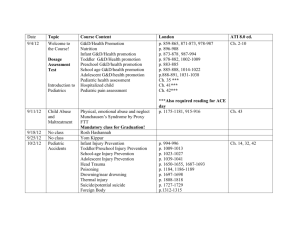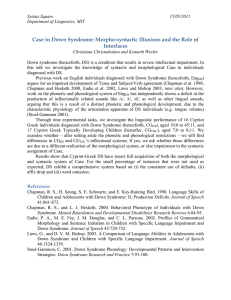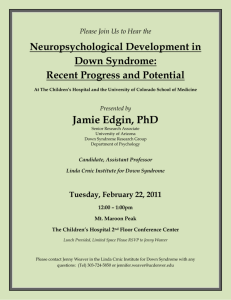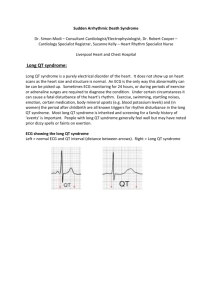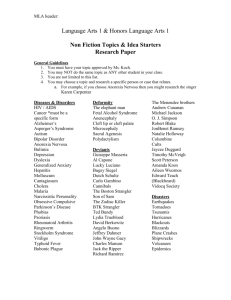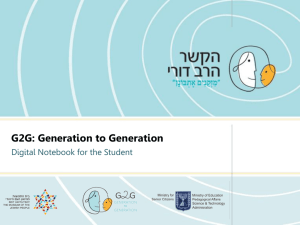abstract - Queen Margaret University
advertisement
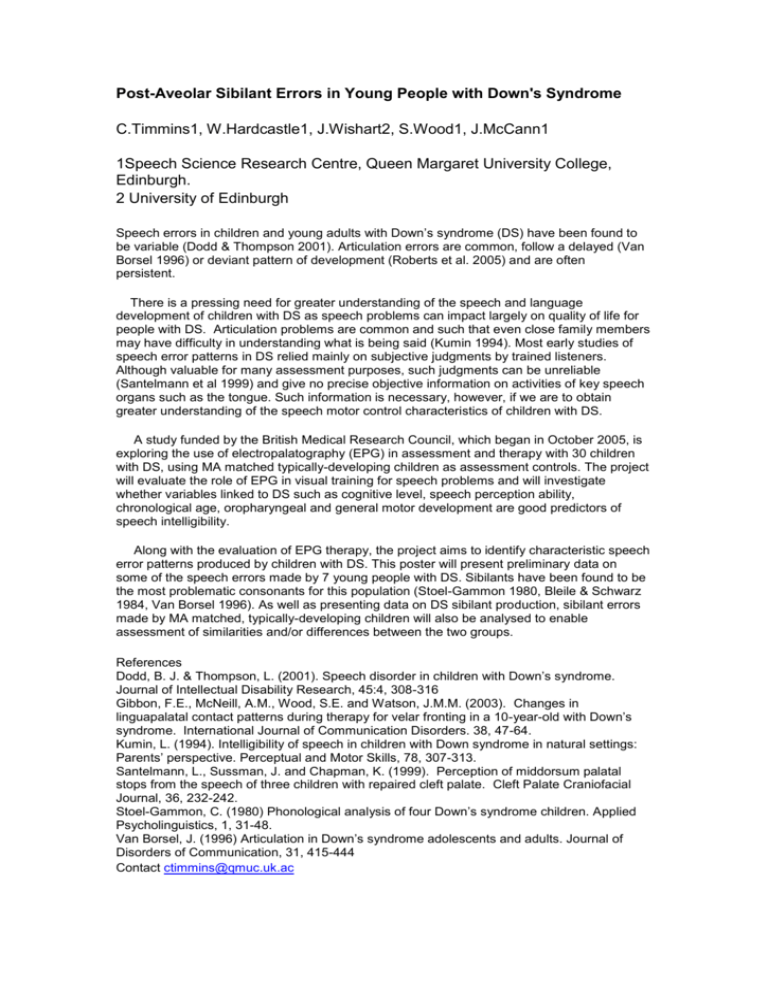
Post-Aveolar Sibilant Errors in Young People with Down's Syndrome C.Timmins1, W.Hardcastle1, J.Wishart2, S.Wood1, J.McCann1 1Speech Science Research Centre, Queen Margaret University College, Edinburgh. 2 University of Edinburgh Speech errors in children and young adults with Down’s syndrome (DS) have been found to be variable (Dodd & Thompson 2001). Articulation errors are common, follow a delayed (Van Borsel 1996) or deviant pattern of development (Roberts et al. 2005) and are often persistent. There is a pressing need for greater understanding of the speech and language development of children with DS as speech problems can impact largely on quality of life for people with DS. Articulation problems are common and such that even close family members may have difficulty in understanding what is being said (Kumin 1994). Most early studies of speech error patterns in DS relied mainly on subjective judgments by trained listeners. Although valuable for many assessment purposes, such judgments can be unreliable (Santelmann et al 1999) and give no precise objective information on activities of key speech organs such as the tongue. Such information is necessary, however, if we are to obtain greater understanding of the speech motor control characteristics of children with DS. A study funded by the British Medical Research Council, which began in October 2005, is exploring the use of electropalatography (EPG) in assessment and therapy with 30 children with DS, using MA matched typically-developing children as assessment controls. The project will evaluate the role of EPG in visual training for speech problems and will investigate whether variables linked to DS such as cognitive level, speech perception ability, chronological age, oropharyngeal and general motor development are good predictors of speech intelligibility. Along with the evaluation of EPG therapy, the project aims to identify characteristic speech error patterns produced by children with DS. This poster will present preliminary data on some of the speech errors made by 7 young people with DS. Sibilants have been found to be the most problematic consonants for this population (Stoel-Gammon 1980, Bleile & Schwarz 1984, Van Borsel 1996). As well as presenting data on DS sibilant production, sibilant errors made by MA matched, typically-developing children will also be analysed to enable assessment of similarities and/or differences between the two groups. References Dodd, B. J. & Thompson, L. (2001). Speech disorder in children with Down’s syndrome. Journal of Intellectual Disability Research, 45:4, 308-316 Gibbon, F.E., McNeill, A.M., Wood, S.E. and Watson, J.M.M. (2003). Changes in linguapalatal contact patterns during therapy for velar fronting in a 10-year-old with Down’s syndrome. International Journal of Communication Disorders. 38, 47-64. Kumin, L. (1994). Intelligibility of speech in children with Down syndrome in natural settings: Parents’ perspective. Perceptual and Motor Skills, 78, 307-313. Santelmann, L., Sussman, J. and Chapman, K. (1999). Perception of middorsum palatal stops from the speech of three children with repaired cleft palate. Cleft Palate Craniofacial Journal, 36, 232-242. Stoel-Gammon, C. (1980) Phonological analysis of four Down’s syndrome children. Applied Psycholinguistics, 1, 31-48. Van Borsel, J. (1996) Articulation in Down’s syndrome adolescents and adults. Journal of Disorders of Communication, 31, 415-444 Contact ctimmins@qmuc.uk.ac





